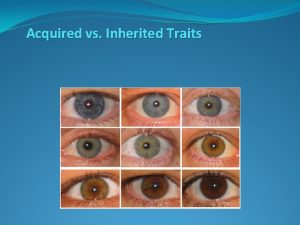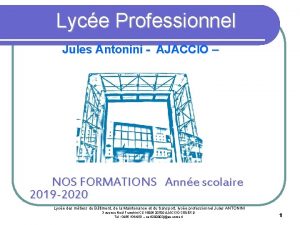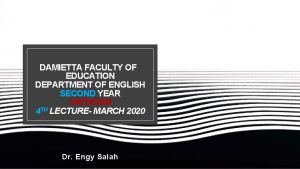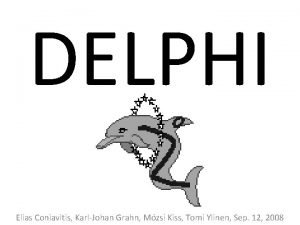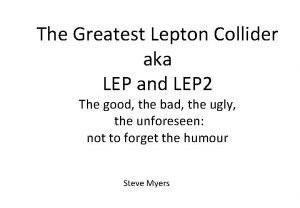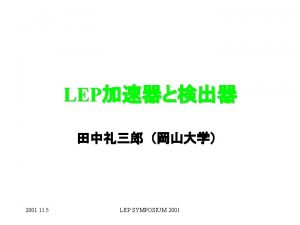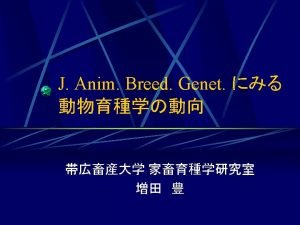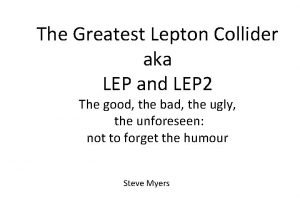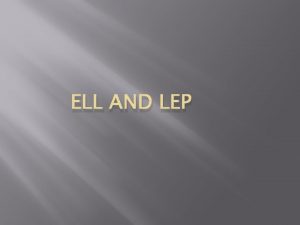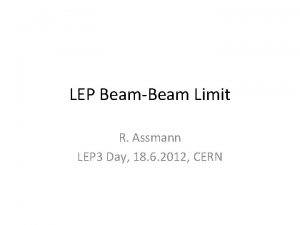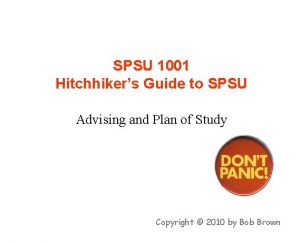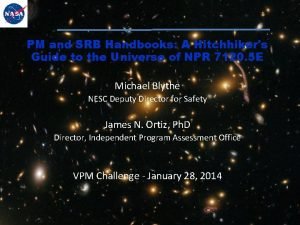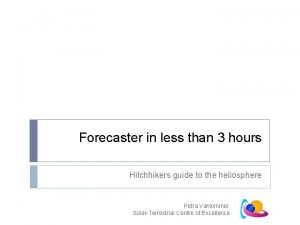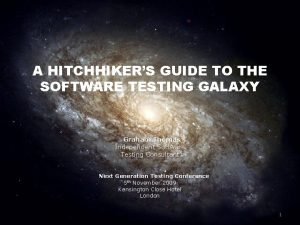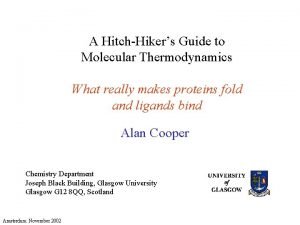A HitchHikers Guide to the LEP 3 RF


![Introduction and scope beam energy Eb [Ge. V] circumference [km] beam current [m. A] Introduction and scope beam energy Eb [Ge. V] circumference [km] beam current [m. A]](https://slidetodoc.com/presentation_image/3bdd8b3f478d2e7e060a332c699ba7e6/image-3.jpg)











- Slides: 14

A Hitch-Hiker’s Guide to the LEP 3 RF System Andy Butterworth BE/RF Thanks to E. Ciapala, O. Brunner, E. Jensen, J. Tuckmantel

Outline Results of very preliminary brainstorming! • • • Introduction & scope Overall dimensions RF power components Cryogenic load Low Level RF Conclusions
![Introduction and scope beam energy Eb Ge V circumference km beam current m A Introduction and scope beam energy Eb [Ge. V] circumference [km] beam current [m. A]](https://slidetodoc.com/presentation_image/3bdd8b3f478d2e7e060a332c699ba7e6/image-3.jpg)
Introduction and scope beam energy Eb [Ge. V] circumference [km] beam current [m. A] #bunches/beam #e−/beam [1012] bending radius [km] damping partition number Jε momentum compaction αc [10− 5] SR power/beam [MW] ESR loss/turn [Ge. V] VRF, tot [GV] δmax, RF [%] fs [k. Hz] Eacc [MV/m] effective RF length [m] f. RF [MHz] δSR, rms [%] σSRz, rms [cm] 120 26. 7 7. 2 4 4 2. 6 1. 5 8. 1 50 6. 99 12 4. 2 3. 91 20 606 1300 0. 23 • Assume 1. 3 GHz ILC-type cavities – but 700 MHz SPL/ESS/LHe. C type also possible (and might be preferable) • Have initially considered only the collider ring – Suggestion to share RF sections with accelerator ring? • No comments on the feasibility of co-existence with LHC or LHe. C !

Overall dimensions • 12 GV @ 20 MV/m 606 m effective RF length – 580 TESLA cavities @ 1. 038 m per cavity • 73 cryomodules with 8 cavities/module (XFEL type) – even number easier for RF distribution – total length 818 m • cf. LEP 2: 864 m RF sections at the 4 even points as in LEP 2?

RF Power • 200 MW total wall-plug power • 100 MW total beam power @ 7. 2 m. A/beam • 580 cavities 172 k. W/cavity at maximum beam current What power source? How many cavities per source?

Available 1. 3 GHz klystrons • 1. 3 GHz ILC – FNAL-KEK (TH 2104) – – – Ucat/ Icat : duty cycle: gain / η: av. Power Cost estimate: 128 k. V/88 A 2 ms / 10 Hz 50 d. B / 45% ≤ 200 k. W 240 k. Euros/tube DESY THALES • 10 MW 1. 3 GHz MBK – FLASH/XFEL – – – Ucat/ Icat : duty cycle: gain / η: av. Power Cost estimate: 140 k. V/155 A 1. 5 ms / 10 Hz 50 d. B / 50% ≤ 150 k. W 400 k. Euros/tube Need to develop a klystron for CW operation PCW ~450 k. W feasible? 2 cavities/klystron DESY

Power couplers • XFEL dual window design, limited in power – ~280 k. W, pulsed 1. 4 ms @ 10 Hz, 2. 5 k. W average

Power couplers Cornell design for ERL: • tested up to 60 k. W CW • 2 couplers/cavity Cannot use ILC/XFEL cryomodule “as-is” • • • main power coupler development necessary high power difficult at 1. 3 GHz due to small physical size dual coupler c. f. Cornell ERL, XFEL higher-harmonic cavities?

Higher order modes • Short bunches, high beam power • IKC/XFEL cryomodules: – HOM couplers • modes below beam pipe cut-off – Beam pipe absorbers (XFEL) • modes above beam pipe cut-off • designed for 100 W CW ILC HOM coupler • LEP 3 vs XFEL: – 250 x CW beam current – 10 x bunch length Study of HOM requirements needed XFEL

RF distribution • LEP 2: – 1 klystron (1. 3 MW) – feeding 8 cavities via waveguides – tree-like distribution – circulators to protect klystron from reflected power • LEP 3: – 1 klystron for 2 cavities ? – load & circulator power rating – 170 k. W CW circulator (Cornell) – a twin coupler scheme would introduce complicated power splitting LEP 2 RF distribution scheme Cornell ERL power splitting scheme

Cryogenic load • TESLA/ILC cavities: Q 0 ≥ 1 x 1010 R/Q 1036 linac ohms Vcav 20. 7 MV dyn. load: 41 W/cavity @ 2 K total dyn. load: 24 k. W @ 2 K 3 k. W/sector c. f. LHC cryoplants 2. 1 or 2. 4 k. W/sector @ 1. 9 K Existing LHC cryo capacity may not be sufficient

Low Level RF • Low Level RF in LEP 2: – continuous beam loading • high loaded Q filling time >> frev – slow voltage control loop – static phase adjustment – fast RF feedback acting on 8 -cavity vector sum was tried to stabilize cavity field against ponderomotive oscillations (Lorenz force detuning driving mechanical resonances) • not (very) successfully used operationally • can certainly do better with modern digital system

How about a lower frequency (700 MHz)? • Potentially higher klystron average power levels – 450 k. W average power klystron already exists (SNS TH 2168 @ 805 MHz) – Reduced number of power stations • Power couplers: – Larger physical size lower power density – e. g. HIPPI 1 MW power coupler: 1 MW peak, 10% duty cycle • Average power availability of passive components – waveguides, loads • More robust, less sensitive and less challenging

Conclusions • Size of collider ring RF system similar to LEP 2 • High-power RF components not available off the shelf: – klystrons – main power couplers • HOM coupler requirements need to be studied • Existing LHC cryogenic capacity at 2 K may be insufficient • Is 1. 3 GHz the best frequency choice? – RF power considerations
